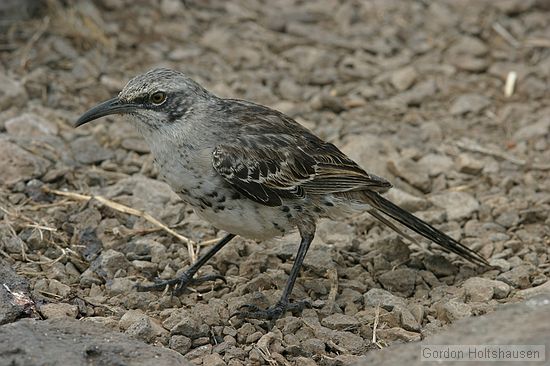|
|
| Line 1: |
Line 1: |
| − | | + | [[category:incomplete]] |
| | ;Nesomimus macdonaldi | | ;Nesomimus macdonaldi |
| | | | |
| Line 5: |
Line 5: |
| | | | |
| | ==Identification== | | ==Identification== |
| − | Hood mockingbirds are dull white on the chest and belly and streaked or spotted gray to brown coloring on the top. The dark wing feathers appear edged off-white. They may also have darker spots on the chest. The Hood mockingbird sports a black streak across its yellow-to-brown eyes, and has a black bill and legs. The Hood mockingbird is classified as a Vulnerable species because of its limited range and the risk that dangerous weather pattern changes could affect its population.
| + | Dull white chest and belly, streaked or spotted grey to brown coloring on the top. The dark wing feathers. Darker spots on the chest, a black streak across its yellow-to-brown eyes, and has a black bill and legs. |
| − | | |
| | | | |
| | ==Distribution== | | ==Distribution== |
| − | The Hood mockingbird is found primarily on a small island in the Galápagos known as Hood Island (also known as Espantildeola).
| + | [[Hood Island]] in the Galápagos |
| | | | |
| | ==Taxonomy== | | ==Taxonomy== |
| | + | |
| | ==Habitat== | | ==Habitat== |
| − | Hood Island is a low-lying, flat-topped island with primarily rocky terrain and sand and pebble beaches. The available vegetation is primarily scrub. Fresh water is scarce.
| + | Rocky terrain and sand and pebble beaches. |
| | + | |
| | ==Behaviour== | | ==Behaviour== |
| − | The Hood mockingbird is an omnivore, which means it eats animals as well as vegetation. The bird uses its long, curved beak to crack open seabird eggs in order to eat their contents. It will also drink blood from the wounds of other living or dead animals, and scavenge carrion (decaying animal carcasses).
| + | Diet includes seabird eggs. |
| − | During nonbreeding season, Hood mockingbirds travel in large groups of around forty to forage and defend their territories. In the months of March and April when nesting time occurs, they split off into smaller groups. The species are cooperative breeders, meaning many birds will share feeding duties for the young in a group, not just the parent birds. The typically breeding group is approximately five adult males and two or three adult females. Because of their remote location, Hood mockingbirds don't encounter people except in the form of ecotourists and researchers. When they do come in contact with humans, they are said to be unafraid and will readily approach them and scavenge for food and fresh water if accessible.
| |
| − | | |
| − | | |
| − | | |
| − | | |
| | | | |
| | + | Birds will share feeding duties for the young in a group. |
| | ==External Links== | | ==External Links== |
| | {{GSearch|Nesomimus+macdonaldi}} | | {{GSearch|Nesomimus+macdonaldi}} |
| | [[Category:Birds]] | | [[Category:Birds]] |
Revision as of 15:16, 2 October 2007
- Nesomimus macdonaldi

Photo by GordonH
Photo taken: Galapagos.
Identification
Dull white chest and belly, streaked or spotted grey to brown coloring on the top. The dark wing feathers. Darker spots on the chest, a black streak across its yellow-to-brown eyes, and has a black bill and legs.
Distribution
Hood Island in the Galápagos
Taxonomy
Habitat
Rocky terrain and sand and pebble beaches.
Behaviour
Diet includes seabird eggs.
Birds will share feeding duties for the young in a group.
External Links




